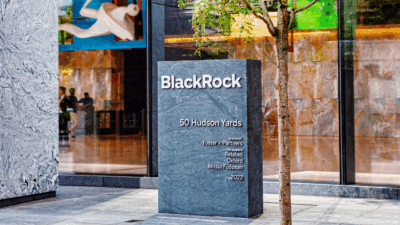Big Banks are Falling in Love with Mid-Sized Companies
Wall Street’s biggest banks are increasingly working with mid-sized companies — much to the chagrin of mid-sized and boutique banks.

Sign up for smart news, insights, and analysis on the biggest financial stories of the day.
Mid-sized companies flocked to big banks during last year’s banking crisis. So far, they’re staying.
Increasingly, according to a Wall Street Journal analysis published Monday, Wall Street’s biggest banks are working with mid-sized companies on loans, IPOs, and mergers and acquisitions — much to the chagrin of mid-sized and boutique banks for whom such clientele were bread and butter. It’s the neverending wheezing from last year’s contagion.
Crisis Actors
The implosion of Silicon Valley Bank and subsequent contagion that spread to small and regional mid-sized banks pushed many small and mid-cap companies (those with an annual revenue of less than $2 billion) to switch over to major banks like JPMorgan Chase and Bank of America. Meanwhile, the Federal Reserve’s decision to keep interest rates higher for longer has hamstrung mid-sized banks’ capacity for lending.
The steady tide of new clients has been welcomed by big banks, which are beset by the post-pandemic IPO drought and relative decline in mega mergers amid heightened antitrust scrutiny. Small has been beautiful for the behemoths:
- At JPMorgan, global M&A revenue declined 12% in 2023 amid a dealmaking dearth. But that figure would’ve been far worse if not for middle-market dealmaking; Chase’s unit for those deals saw revenue surge nearly 50% last year.
- Similarly, private equity buyouts of mid-cap companies have remained robust even with the larger downturn: Last year, middle-market firms accounted for 74% of PE buyouts, according to PitchBook data seen by the WSJ, narrowly edging out a 2019 record.
Trouble Brewing: There may be even more woes on the horizon for small and mid-sized banks. Last week, following the Fed’s decision to hold rates steady yet again, chairman Jerome Powell called the U.S. banking system “solid, strong, [and] well capitalized.” Not everyone agrees, thanks in large part to growing pressure on commercial real estate — a sector that small and regional banks have outsized exposure to. “We see more risks of bank failures, and a lot of forced consolidation across banking,” Greg Friedman, co-founder of Atlanta-based real-estate investment firm Peachtree Group, recently told MarketWatch. New mortgage loans have leapt as high as 7% for landlords in recent years, all while office space values have fallen nearly 37% since 2022, per Green Street Advisors. That’s not great for small and mid-sized banks. JPMorgan, on the other hand…











